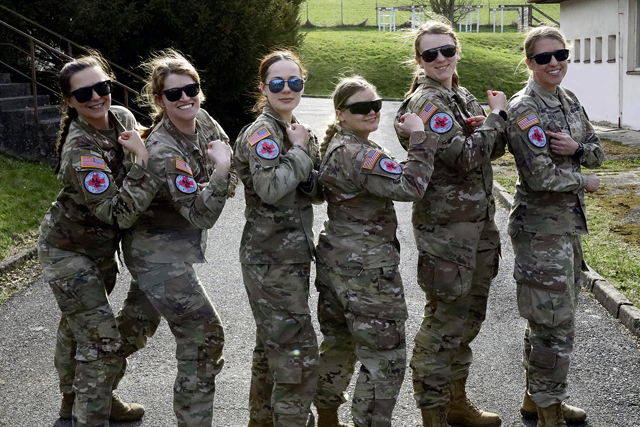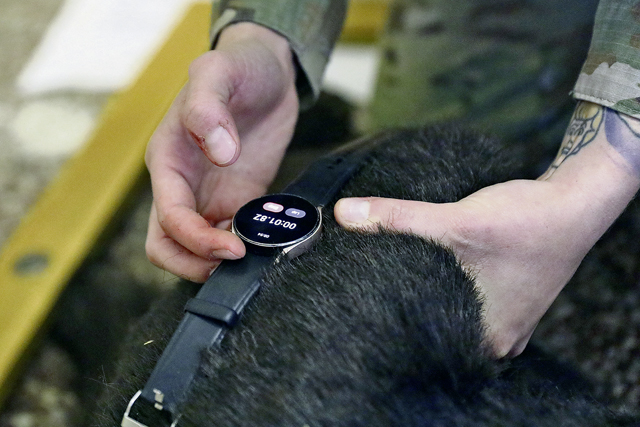
Moravská Trebová, Czech Republic — The 64th Medical Detachment Veterinarian Support Services partnered up with the Armed Forces of Czech Republic to host 21st Theater Sustainment Command veterinarians, veterinarian assistants, canine handlers and medics from multiple NATO, allied partner nations, and police organizations across Europe in a course to improve canine trauma care at Moravská Trebová Military High School, Czech Republic, from March 25-29.
The Canine Tactical Combat Casualty Care course covered life-saving combat emergency canine medical skills. It is designed for canine handlers and combat medics, but also applies to other relevant medical professionals such as veterinary personnel and human health care providers. The program is based on U.S. Department of Defense Joint Trauma System guidelines for Canine Tactical Combat Casualty Care.
“We conducted a ‘crawl-walk-run’ where we introduced our NATO allies, as well as U.S. handlers and medics, to the concept of the MARCH algorithm and PAWS; to assess a K9 casualty, respond and treat, and get them to MEDEVAC,” said Capt. Freelie Mitchel, the event lead planner. “A lot of people think that our canines aren’t that important, but they are a force multiplier. We need to be able to treat these canines just like we would our human service members.”

This course focused on developing the participants’ knowledge that will impact the survival of working dogs in real-world operations through both in-depth classroom learning, and realistic scenario driven exercises. Participants were paired up for the scenario portion to not only learn from each other, but actively improve the interoperability between the U.S. and allied and partner nation working dog communities. This mixing of nationalities is a realistic expectation of what the participants will face when conducting real-world operations in Europe and abroad.
The training reinforced real-world realism by using Diesel Dogs (the robotic training dog), which mimics behaviors real military working dogs would exhibit. These robotic training aids are equipped with animatronic functions, such as breathing and muscle movement, and stereo output mimicking realistic canine reactions.
This in-depth training is not for the squeamish. The dogs’ injuries were often seeped in simulated blood at the point of injury adding yet another layer of realism. While this training may make some people uncomfortable, participants who already work with military working dogs know just how valuable this realism is.
“People don’t know how much blood a dog has and how little time you have to save a dog,” said Sgt. Brianna Plush, a military working dog handler from the 18th Military Police Brigade. “They are an amazing tool to use and there’s nothing like them; you can’t replicate what a dog can do.”
The Canine Tactical Combat Casualty Care course is critical to maintaining proficiency across Europe since it is the only course of this nature available to the Working Dog community within the theater.
“Here in this theater, we really focus on interoperability with our allies. A lot of our deployments we’re out there with other NATO nations and as some of the most prominent veterinarians in this region, we’re often times providing care to the working dogs no matter what nation they’re from,” said Capt. Laura Nelson-Parr, the 64th Medical Detachment VSS officer in charge.
At the end of the course, every participant who passed their hands-on and written exams was presented with certificates of completion, ensuring their efforts and proficiencies were justly documented.
There was also a special memento included in this iteration of the international K9TCCC, as the Moravská Trebová Military High School commander, Col. Milan Kalina, presented each participant and cadre a miniature 3D-printed MWD model as a symbol of the growing multinational partnerships within the MWD and veterinarian professions.


